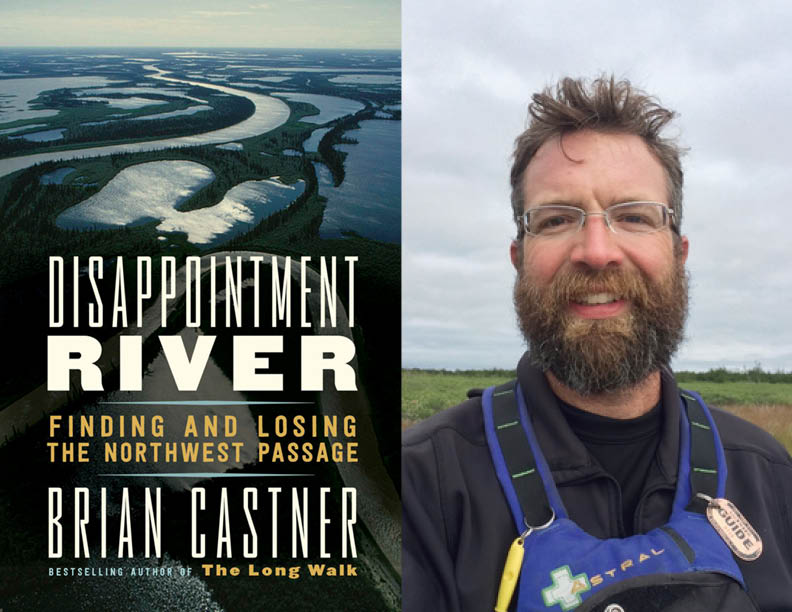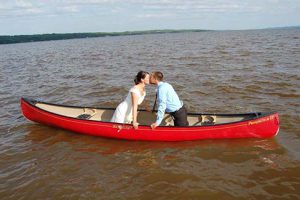
Exploration
The pull of Everest
A century after a Canadian was instrumental in charting the world's highest peak, a fellow Canadian reflects on the magnetism of Everest
- 4083 words
- 17 minutes
This article is over 5 years old and may contain outdated information.
People & Culture

The water towered all around me. The standing waves were thatched and stacked up tight, each white-topped ridge squared to the next as in a log cabin quilt pattern. This is a slalom, I thought, but too late. My kayak broke through the first wave, I clumsily jerked 90 degrees, pinballed back, knocked into the next wave, and tried to turn, but my edge was hopelessly off, and when I hit the third, the water grabbed my low chine and I tumbled from my boat.
It was cold and dark and I was upside down and everything was loud in my ears. I pushed off, twisted, kicked, hit my head. As if I were a clapper in a bell, the ring of my helmet on my boat in the center of my brain. My hip hit a rock, hard, and then I pulled my feet up, so they couldn’t get trapped on the bottom, and I tried to swim. I was still moving with the current at speed, and I pulled the water and pushed my boat away and I broke the surface and took a breath. My paddle was still in my hand.
“Swim over here,” John called to me, calm as could be.
I did, and reached out for the handle dangling from the tail of his kayak.
“Do you want to ride this one out?” he asked me, only occasionally dipping his paddle in the water to maneuver us around rocks.
“I think that would be best,” I managed. A wave broke over my head, and I took a big long drink of the river.
Once on the granite shore, I cinched down the straps on my vest, tight as a tick, and remounted my kayak.
“Are you cold?” John asked. The sun blazed, but I was shaking from the shoulders down.
“No, I think it’s adrenaline,” I said.
“That was Sambuca,” he said, naming the rapid that owned me. “Wanna try Flipper?”
“The next rapid is called Flipper?”
I followed John’s line through a calm pool and to the head of the next whitewater plume. It rose before me in layers, and I felt small beneath it. I got through the first crest, the second, the third. I was through the wave train; I had made it. But then I hit the recirculating water at the bottom of the rapid, eddies on each side meeting as a boil. One eddy fence grabbed my nose, the other my tail, I felt my kayak spinning, and then I was in the cauldron again.
***
In the summer of 2016, I set out to retrace Alexander Mackenzie’s famous expedition to the Arctic Ocean. Mackenzie was a fur trader seeking the Northwest Passage, and in June 1789, with his Chipewyan partner Awgeenah, their hired voyageurs, and wives, he embarked with a little flotilla of canoes from Lake Athabasca, searching for the Pacific. Eventually, they’d paddle the river that now bears Mackenzie’s name, but the first river they descended was the Slave.
To understand that river as Mackenzie saw it, I contacted Leif Anderson and John Blyth, organizers of the Fort Smith Paddling Club, and asked them to take me out on the Slave. As a lover of whitewater, I knew the Slave’s reputation — incredible volume, world-class rapids — and the chance to kayak even a section would be like getting to play catch in Yankee Stadium.
There was no cell service on the way to Fort Smith. On my phone’s useless green blur of a map, the dirt road looked like a paper cut on a whale. Google Maps’ coverage of the Northwest Territories is primarily low-def, feeding the impression most southerners have of this rocky socket of Arctic wilderness: it’s big and it’s empty.
Big, yes. But empty, not quite. Fort Smith proved to be a densely built town of tidy houses and government offices, home to 2,500 people, roughly half indigenous. I arrived on the eve of Aboriginal Day. Smoke rose from the cookout at the fire circle, and volunteers set up white tents and teepees for the men to play Hand Games, the popular traditional Dene guessing game.
The Slave River is immense, as wide as five normal rivers, and crisscrossed with pour-overs and channels. It reminded me of the rapids above Niagara Falls, but many times wider. The Slave drains northern British Columbia, half of Alberta and upper Saskatchewan, and the rapids at Fort Smith are formed where a northern quadrant of the Canadian Shield meets the tar sands. Flocks of white pelicans, the northernmost breeding colony on the continent, perched on rocks or floated in eddies, serene among the boil.
Sand and granite, gulf coast seabirds amid black spruce, it was all juxtaposed and spectacular. My mind reeled at the view.
I eventually met up with Leif and John. Leif is a giant blond Viking with a raging mullet haircut. He’s also a member of the U.S. Freestyle Kayak team and travels all the way from Idaho every summer to train. John, in contrast, is small and dark, with good looks that I’d call all-American if he weren’t Canadian, born and bred in the North. In the videos I found of him online, John has long dreadlocks, but he had recently lopped them off; Leif picked on him for looking respectable. Like a ski-bum kid who doesn’t know his good fortune to grow up in Vail or Snowbird, John learned to kayak on the Slave and has no need to travel like Leif.

I told them both about my plan, to paddle the whole Mackenzie River that summer.
“You’re going to dig the Mackenzie,” John said to me. “Lots of people do it, just take a few months and go.”
“Really, lots?” I asked.
“A few dozen people a year, I bet.”
“That’s a lot of people?”
“Well, this is the Northwest Territories,” John said.
This place, I thought, it’s defined by the absence of humans. So much space, but only forty thousand residents total.
“There are so many amazing people up here,” another paddler said, “you’re not even going to write about the Mackenzie River in your book. You’re just going to write about all the people you meet.”
“I went to Alaska once,” John said, “and I thought it would be like the N.W.T., but it’s not. In Alaska, you have hippies and rednecks and Indians, and everyone fights. Hippies have money, it causes problems. Here, we just have rednecks and Indians. We have a bush code. Be generous, don’t steal. It’s more harmonious.”
***
After I officially joined the paddle club — for insurance reasons, to hold them harmless in case I died — Leif and John discussed which of the four main rapids to do for my orientation tour. Even today, the final cataract is still known as it was in Mackenzie’s day, as the Rapids of the Drowned.
“They actually aren’t that bad,” said Leif. “Just a small feature in a channel on river right. We figure that’s where they got caught. You could get in trouble, if you don’t know it’s coming. Cassette is actually the worst rapid.”
The best choice for me, John and Leif agreed, was the Mountain Rapid. I borrowed a sit-on-top self-bailing plastic kayak from the club, grabbed my gear, and we loaded into John’s beat-up truck for the short drive to water. We parked on a sandy dune overlooking the river and stripped to our skivvies to put on dry suits.
It took almost an hour to cross the river, to line up with the whitewater line that Leif thought I could handle. On our way, we passed rust-coloured granite islands, and while I could hear the roar of the river, I could see nothing downstream, so precarious the drop that the whitewater was hidden below the horizon line.
“Think of the Slave as a ski resort,” Leif said, explaining why we were bypassing so many rapids to find a specific one to run. “We’re at the top of the chairlift now, each line is named. We can pick the black diamond run, the double black.”

“What are we running?” I asked.
“Sambuca is a solid blue.”
I got trashed in Sambuca, and Flipper afterward. I had never experienced a river like this. The boils and eddy fences were so powerful, driven by such volume, that seemingly innocuous flat water proved dangerous. My kayak was constantly tugged in one direction or the other; I jittered keeping my balance. I felt as if the basic laws of hydraulics, in their magnified state on the Slave, were being undone, and I didn’t trust myself with even the most rudimentary moves.
“Eddies within eddies,” John said, and he laughed.
When we finally approached the shore, John made a turn upstream. “We need to end on a good note,” he said, and I followed him to the top of a small rapid named Playground. From upriver, Playground looked like an idealized wave train, a series of perfect crests. Three strokes forward, and I topped the first, pushed my nose through, then a second, and more. I rode up and down like on a merry-go-round, and the water was so soft, big downy pillows off the bed of a fancy hotel.
John was right. I felt a little better, but not much.
Once through Playground, I headed for the takeout. There was an obvious saddle in the ridgeline. No wonder the traditional portage route starts here, I thought. With a plastic kayak on my shoulder, I followed the same trail as the voyageurs, carrying a heavy boat up the soft sand.
The Slave had humbled me. I had overestimated my skills and learned my lesson. The next day I would start my run on the Mackenzie River, where I wouldn’t have John and Leif to rescue me and capsizing would end my trip.
Are you passionate about Canadian geography?
You can support Canadian Geographic in 3 ways:

Exploration
A century after a Canadian was instrumental in charting the world's highest peak, a fellow Canadian reflects on the magnetism of Everest

People & Culture
The story of how a critically endangered Indigenous language can be saved

Exploration
Caving: The ultimate underground sport

History
Canadian Canoe Museum explores the link between paddling and romance